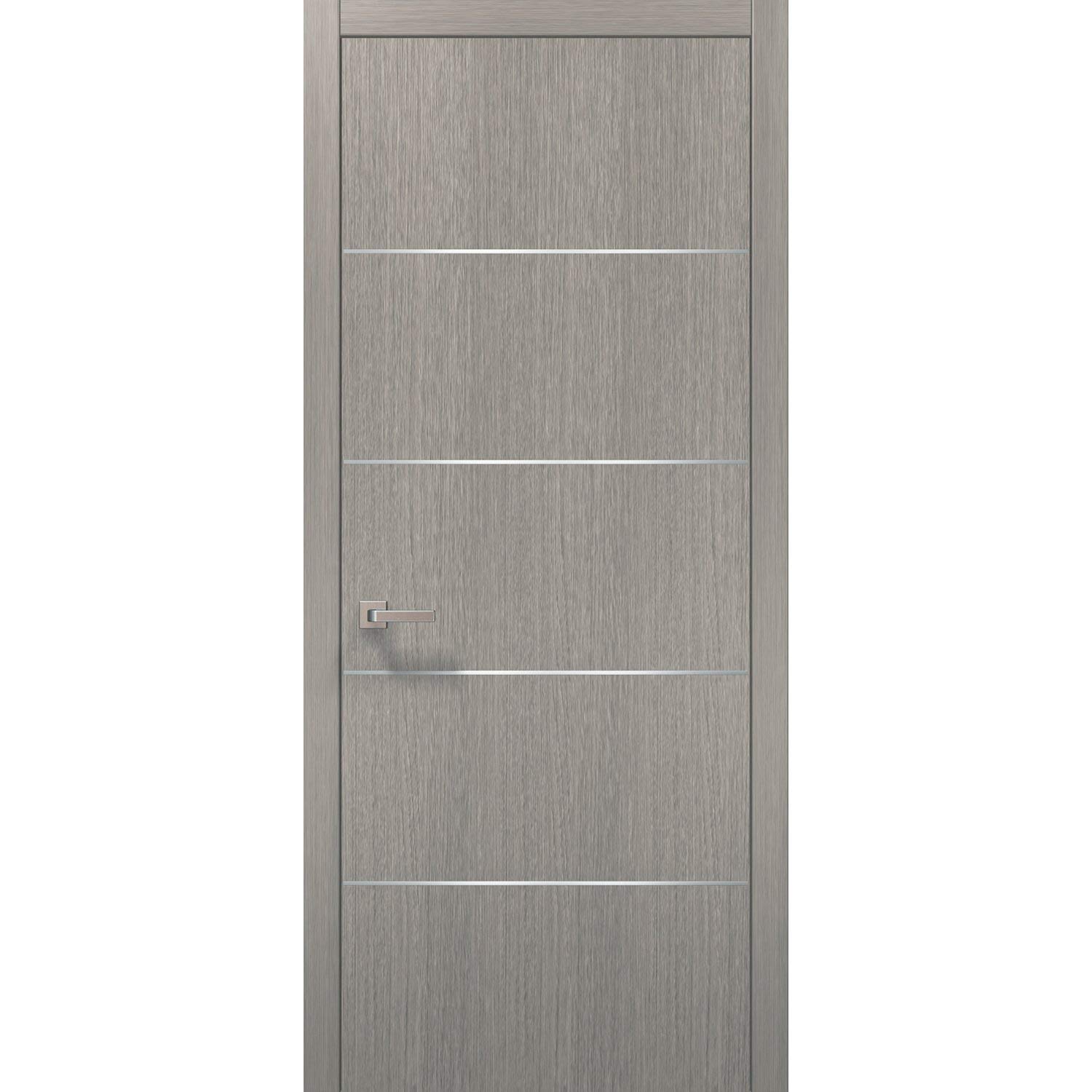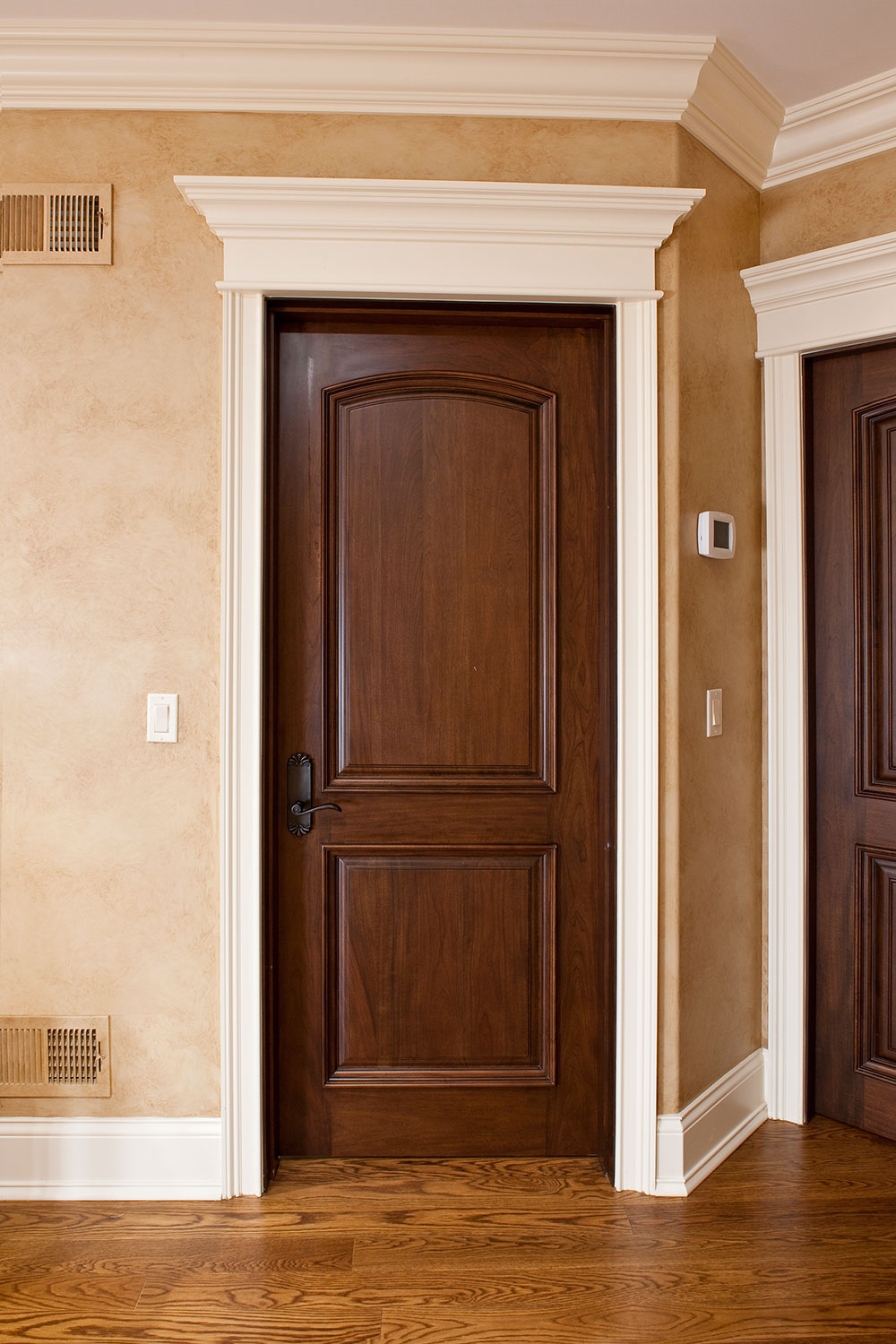How to paint an interior door? Painting an interior door can be a cost-effective way to refresh and update the look of a room. Whether you’re looking to change the color or simply give your door a fresh coat of paint, the process requires careful preparation and attention to detail. In this comprehensive guide, we will walk you through the step-by-step process of painting an interior door, from gathering the necessary materials to achieving a professional finish.

Materials You’ll Need:
Before starting the painting process, gather the following materials:
- Drop cloths or plastic sheeting to protect the surrounding area from paint splatters.
- Painter’s tape to cover hardware, hinges, and any areas you don’t want to be painted.
- Sandpaper (medium to fine grit) to smooth the surface of the door.
- Tack cloth or a damp cloth for cleaning the door.
- Primer suitable for your door material (if needed).
- Interior paint of your desired color and finish.
Step-by-Step Guide:
Preparation:
Remove the Door: If possible, remove the door from its hinges for easy and thorough wall paint. Lay it flat on a stable surface, such as sawhorses or a workbench.
Clean the Door: Wipe down the door with a tack cloth or a damp cloth to remove any dust, dirt, or grease. This ensures a smooth and clean surface for painting.
Protect Surrounding Areas: Lay drop cloths or plastic sheeting to protect the floor and surrounding areas from paint splatters. Use painter’s tape to cover hardware, hinges, and any areas you want to keep paint-free.
Sanding:
Smooth the Surface: Use medium to fine grit sandpaper to sand the entire surface of the door. Sanding helps remove any existing finish, imperfections, or rough spots, allowing the paint to adhere better.
Feather the Edges: Pay special attention to any edges or ridges on the door. Feather the edges by sanding them slightly to create a smooth transition between the painted and unpainted areas.
Clean with Tack Cloth: After sanding, clean the door with a tack cloth to remove any sanding residue. This ensures a clean and dust-free surface for the paint to adhere to.

Primer Application (If Needed):
Assess the Need for Primer: If you’re changing the color of the door, or if the door has stains or enamel paint, it is recommended to apply a primer. Primer helps the paint adhere better and provides an even base for the topcoat.
Apply Primer: Using a paintbrush or foam roller, apply a thin and even coat of primer to the entire door. Follow the manufacturer’s instructions for drying time.
Sand and Clean (Optional): If necessary, lightly sand the primed surface using fine grit sandpaper. Clean again with a tack cloth to remove any sanding residue.
Paint Application:
Stir the Paint: Open your can of interior tone wall paint and stir it thoroughly to ensure an even consistency. Pour a sufficient amount of paint into a paint tray or bucket.
Start with the Panels: Begin painting the raised panels on the door using a brush. Apply an even coat, following the direction of the wood grain. Start from the center of each panel, working your way outward.
Paint the Edges and Stiles: Paint the edges of the door first, followed by the stiles (the vertical parts of the door). Use long, smooth strokes to achieve an even finish. Be careful not to overload the brush with paint.
Paint the Remaining Surfaces: Once the panels, edges, and stiles are painted and dry, move on to the remaining surfaces of the door. Use a brush or foam roller to apply an even coat of paint. Feather out any brush marks or roller lines for a smooth finish.

Finishing Touches:
Remove Painter’s Tape: Once the final coat is dry, carefully remove the painter’s tape while the paint is still slightly tacky. This prevents the paint from peeling or chipping.
Rehang the Door: If you removed the door, rehang it on its hinges after the paint is completely dry. Ensure the paint is fully cured before closing the door to avoid sticking or damage.
Clean Up: Clean your brushes, rollers, and paint tray with warm soapy water or according to the paint manufacturer’s instructions. Properly dispose of any remaining accent wall paint or materials.
Advantages of paint an interior door
Painting an interior door can provide numerous advantages beyond the simple act of freshening up its appearance. It allows homeowners to express their personal style, create visual interest, and transform the overall ambiance of a space.
Personalized Style:
Painting an interior door offers an opportunity to personalize your living space. By selecting a color and finish that reflects your taste and complements your existing décor, you can infuse your unique style into your home.
Visual Interest and Focal Point:
Painting an interior door creates visual interest and serves as a focal point within a room. A distinctive color or finish can draw attention to the door and add depth, creating a standout feature in an otherwise neutral space.
Coordinated Design:
A painted interior door can contribute to an overall coordinated design scheme in a room. By selecting a color that echoes or complements other key elements, such as wall color or furnishings, you can tie the room together and create a cohesive aesthetic.

Adding Color and Personality:
Expressing Individuality: A painted interior door allows you to infuse color and personality into your living space. It provides an opportunity to showcase your individual style and create a unique statement within a room.
Enhancing Mood and Atmosphere: Color has a significant impact on mood and atmosphere. Painting an interior door in a specific hue can evoke different emotions or set the tone for a particular space. For example, a vibrant color can create energy and excitement, while a soothing tone can promote relaxation.
In conclusion
Painting an interior door is a rewarding DIY project that can transform the look of a room. By following these step-by-step instructions and taking the time to prepare and apply the paint carefully, you can achieve a professional and refreshed finish. Remember to gather the necessary materials, protect the surrounding areas, sand the surface, apply primer if needed, and paint with care to ensure a smooth and durable result. With proper preparation and attention to detail, you can enjoy a beautifully painted interior door that adds charm and personality to your space.

